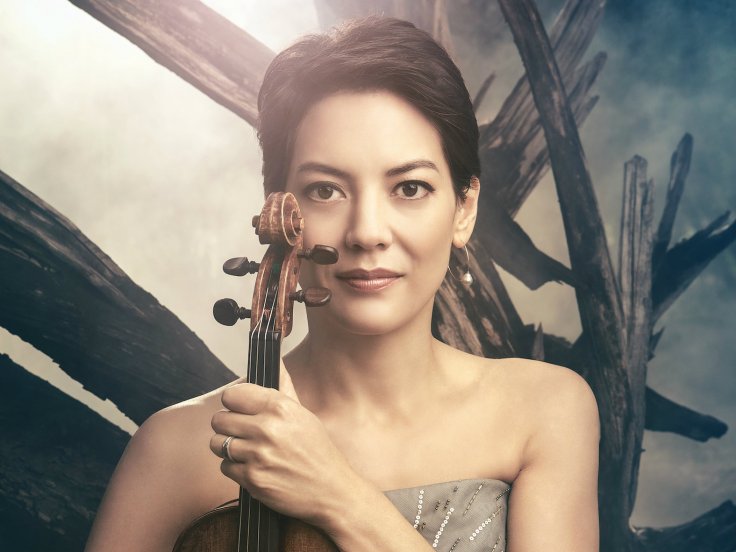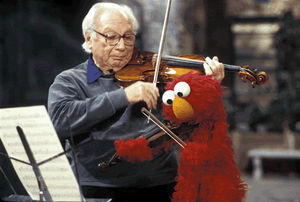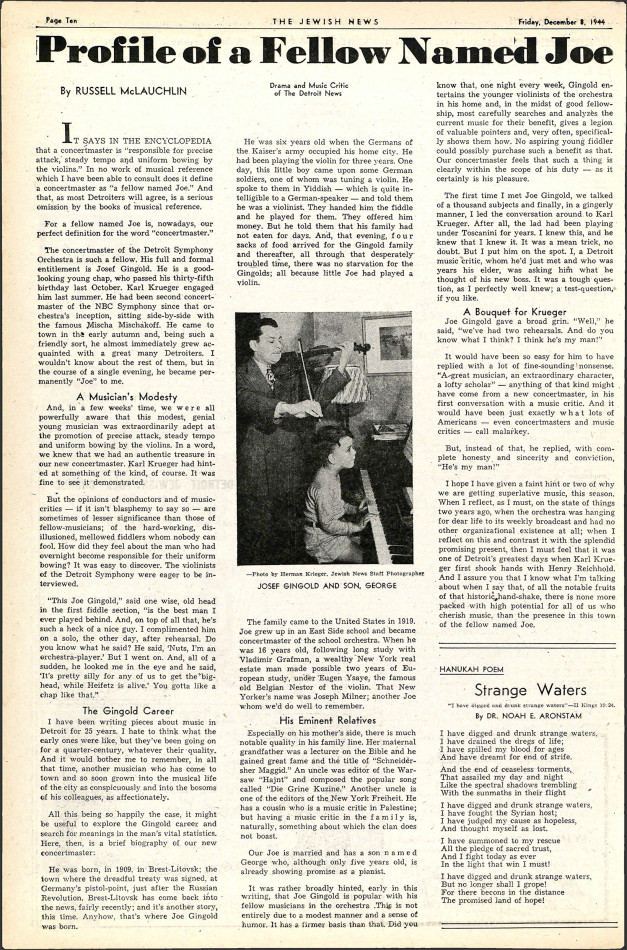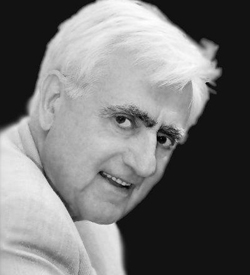Hector Berlioz’s Symphonie fantastique, first heard in 1830, shares some surprising similarities with a teenager’s rock music: It’s shocking, rebellious, and at least partially drug-induced (Berlioz was under the influence of opium). It may have been written to impress a girl (Harriet Smithson, an Irish actress whom Berlioz saw in a production of Hamlet in 1827, leading to an infatuation and ultimately short-lived marriage). It deals with the pain of unrequited love, yet this is clearly an immature vision of love, idealized and illusory. It’s a work of full-blown Romanticism, more concerned with the moment than with traditional formal structure. Foreshadowing Freud, Symphonie fantastique takes us on a deeply psychological journey. What emerges after we enter this hallucinogenic dreamscape is both fascinating and frightening.

Symphonie fantastique’s form is driven by its drama, like an opera without words. Over the course of five movements, a “young musician” descends into the despair of unrequited love. In the first movement, subtitled Passions, this vague hero “sees for the first time a woman who unites all the charms of the ideal person his imagination was dreaming of, and falls desperately in love with her.” This passion is represented by the idée fixe, a musical idea (first heard at this moment in the first movement) which returns and develops throughout the Symphony. We hear the idée fixe pop up in unexpected places. Listen to the way it gradually creeps into the strings in this passage from the end of the first movement. At this moment in the third movement you might miss it, unless you’re tuned into the woodwinds. The fifth movement, Dream of a Witches’ Sabbath, depicts the Hero’s funeral. Witches and hideous monsters shriek, groan, and cackle amid quotes of the Dies Irae (the ancient chant evoking the Day of Wrath). The idée fixe now degenerates into a vulgar, grotesque parody of itself.
Berlioz’s music evokes dramatic scenes. In the third movement, we find ourselves in a country pasture. The sound of distant thunder echoes from hillsides. A dialogue between two shepherds can be heard in the English horn and offstage oboe. (Here Berlioz introduces a spacial dimension to the music that Mahler would later develop with his own offstage instruments). The end of the fourth movement, March to the Scaffold, paints the gruesome scene of the hero’s execution. We hear the decapitated head bounce to the ground in the pizzicatos and then the cheering crowd. But Symphonie fantastique is more than a musical representation of a story. You can throw out Berlioz’s extensive program notes (included below) and the music stands on its own. Listen to Symphonie fantastique as pure music and you’ll hear the distinct personas of the instruments come to live and enter into a drama which transcends the literal story. Throughout the piece, instrumental voices combine and interact in innovative ways which hadn’t been imagined previously.
Amazingly, this music, written three years after Beethoven’s death, often sounds shocking and far-out, even to our modern ears. It’s filled with bizarre, erratic shifts in mood which constantly keep us off balance (for example, listen to this passage from the first movement). In the first movement’s development section, Berlioz veers into new territory with these strange ascending and descending parallel chromatic lines. You’ll hear fragments of this line return throughout the Symphony (here it is in the strange, halting climax of the third movement, and here, and here again in the final movement).
Nowhere is Symphonie fantastique crazier than in the final minutes of the last movement, beginning with this terrifying crescendo. We hear string sound effects like raspy sul ponticello (playing with the bow as close to the bridge as possible) and col legno (hitting the wood of the bow on the strings for a percussive effect that, in this case, sounds like a skeleton’s rattling bones). Listen to the insanity of the woodwinds in this passage, and the way they let out a final tauntingly demonic shriek a few moments later. The Dream of a Witches’ Sabbath concludes with a hellish rumble which hangs in the listener’s ear long after the music has finished.
Berlioz’s program notes, written for the 1830 premiere:
Part One: Dreams – Passions
The author imagines that a young musician, afflicted with that moral disease that a well-known writer calls the vague des passions, sees for the first time a woman who embodies all the charms of the ideal being he has imagined in his dreams, and he falls desperately in love with her. Through an odd whim, whenever the beloved image appears before the mind’s eye of the artist, it is linked with a musical thought whose character, passionate but at the same time noble and shy, he finds similar to the one he attributes to his beloved.
This melodic image and the model it reflects pursue him incessantly like a double idée fixe. That is the reason for the constant appearance, in every movement of the symphony, of the melody that begins the first Allegro. The passage from this state of melancholy reverie, interrupted by a few fits of groundless joy, to one of frenzied passion, with its gestures of fury, of jealousy, its return of tenderness, its tears, its religious consolations – this is the subject of the first movement.
Part Two: A Ball
The artist finds himself in the most varied situations – in the midst of the tumult of a party, in the peaceful contemplation of the beauties of nature; but everywhere, in town, in the country, the beloved image appears before him and disturbs his peace of mind.
Part Three: A Scene in the Country
Finding himself one evening in the country, he hears in the distance two shepherds piping a ranz des vaches in dialogue. This pastoral duet, the scenery, the quiet rustling of the trees gently brushed by the wind, the hopes he has recently found some reason to entertain – all concur in affording his heart an unaccustomed calm and in giving a more cheerful color to his ideas. He reflects upon his isolation; he hopes that his loneliness will soon be over. – But what if she were deceiving him! – This mingling of hope and fear, these ideas of happiness disturbed by black presentiments, form the subject of the Adagio. At the end, one of the shepherds again takes up the ranz des vaches; the other no longer replies. – Distant sound of thunder – loneliness – silence.
Part Four: March to the Scaffold
Convinced that his love is unappreciated, the artist poisons himself with opium. The dose of the narcotic, too weak to kill him, plunges him into a sleep accompanied by the most horrible visions. He dreams that he has killed his beloved, that he is condemned and led to the scaffold and that he is witnessing his own execution. The procession moves forward to the sounds of a march that is now somber and fierce, now brilliant and solemn, in which the muffled noise of heavy steps gives way without transition to the noisiest clamor. At the end of the march the first four measures of the idée fixe reappear, like a last thought of love interrupted by the fatal blow.
Part Five: Dream of a Witches’ Sabbath
He sees himself at the sabbath, in the midst of a frightful troop of ghosts, sorcerers, monsters of every kind, come together for his funeral. Strange noises, groans, bursts of laughter, distant cries which other cries seem to answer. The beloved melody appears again, but it has lost its character of nobility and shyness; it is no more than a dance tune, mean, trivial, and grotesque: it is she, coming to join the sabbath. – A roar of joy at her arrival. – She takes part in the devilish orgy. – Funeral knell, burlesque parody of the Dies irae [a hymn sung in the funeral rites of the Catholic Church], sabbath round-dance. The sabbath round and the Dies irae are combined.
Recommended Recordings
[unordered_list style=”tick”]
- Find the San Francisco Symphony’s recording with Michael Tilson Thomas (featured above) at iTunes, Amazon.
- John Eliot Gardiner’s period instrument recording with the Orchestre Revolutionnaire et Romantique gives us a sense of how the music would have sounded in 1830. Listen here. Find this recording at iTunes, Amazon.
- Sir Colin Davis and the London Symphony Orchestra
[/unordered_list]







